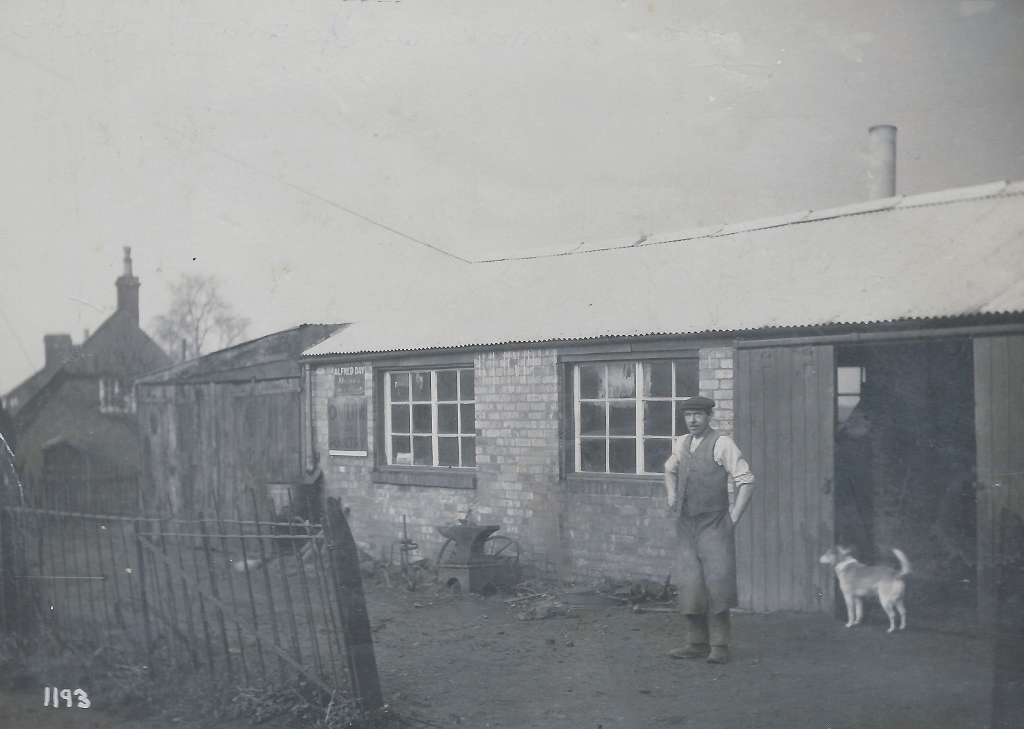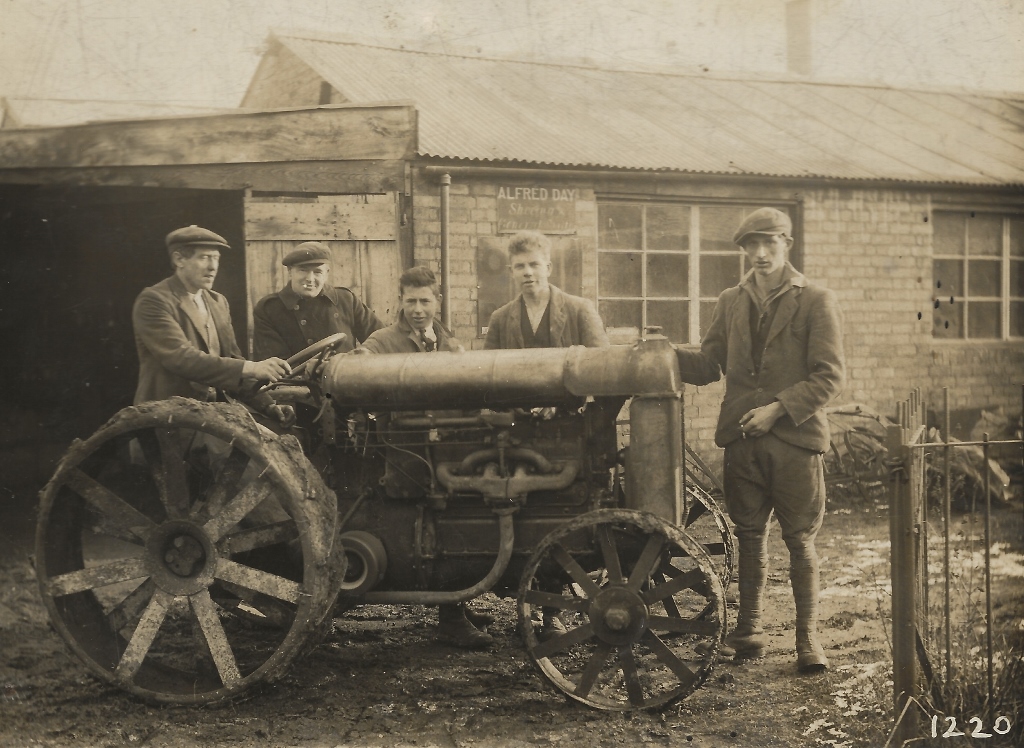During 2022 the old Blacksmith’s Shop at the top of School Street was demolished and a new residence built on the site. The Smithy had been built in the late 1920s by Blacksmith Alf Day, a veteran of the First World War. It followed in a sequence of Blacksmith’s Forges in the village, both at the bottom of Smithy Lane and in Church Road next to the white gate.
Alf Day first came to Church Lawford in 1910 aged 17 as an Apprentice to Charles Whiteman, village blacksmith who was based in a Smithy at what was then the bottom end of the village. The Whiteman family had a long history in the trade, and several family members were in similar positions in Binley, Wolston, Bilton and Dunchurch during the late 19th and early 20th centuries.
Alf also had exposure to equine management with his father being a groom in Buckinghamshire and Northamptonshire, working with land owners as well as the canal industries during the late 19th and early 20th centuries.
Before Alf was able to complete his apprenticeship, war broke out, and he and several other villagers were amongst the first men to volunteer for Army duty. He was mobilised is August 1914, and was wounded twice in Belgium the following year. He was able to apply his skills with horses to the war effort in both France and Belgium.
When he was demobilised in 1919, Alf returned to Church Lawford, but the war years had seen a period of significant change for the village. For over two centuries the parish had been owned by the Duke of Buccleuch, with tenant farmers and a small number of skilled workers alongside local farm labourers throughout the parish of Church Lawford and Kings Newnham. In June 1918, while the war was still raging, the Duke auctioned off his estate in Church Lawford, Kings Newnham, Toft and part of Dunchurch. With Charles Whiteman having passed away during the period Alf was away, the local smithy and nearby smallholding known as Eastlands Farm changed hands a couple of times before being bought in 1919 by John Davis, a milk dealer from Rugby, who began working the farm in 1920, and engaged Alf shortly afterwards as a farrier.
In 1925, with the new opportunities for tradespeople to set up their own businesses in the village, and with Mr Davis looking to scale back his involvements, Alf bought an area of land at the top of School Street on which to build his own Smithy, and an associated house. This part of the village was the busiest area, with the main Coventry to Rugby road, as well as the village stores and post office, the local wheelwrights at what became Triangle Garage, and of course the village school which was situated where the two bungalows at Numbers 1 and 3 School Street now stand. In later years there was also the main road café – Sheffs Café – opposite the Triangle Garage.

The role of the village Blacksmith was undergoing a period of change. Alf built his Smithy with the main forge at the centre, complete with shoeing shop to the righthand side and a covered working area to the left. However, farm mechanisation was gathering pace, drastically reducing numbers of working horses, and thus the demands on the farrier business. Recognising this at an early stage, Alf also acquired welding and plumbing skills in addition to those skills associated with the forge. As well as continuing to produce custom made horse shoes he was able to engineer parts for farm machinery and help maintain the local tractors and farm implements of all kinds.
Alf’s skills with wrought iron meant he produced decorative gates and fencing – indeed his handiwork is still on show with the front gate of the house he had built almost 100 years ago, along with a garden seat of similar vintage. Alf would also sharpen tools using his grindstone, and produce road signs for the council, as well as carrying out general maintenance work on the council workers’ tools, also making use of a lathe and heavy stamping and metal cutting machinery. This also allowed him to maintain other motor vehicles, notably Model T Fords.

At about the same time he was building up his business Alf took on the role of church council clerk in 1924, and married local girl Winnie Pincham in 1928. He remained as church warden for many years, driving his small grey Austin A35 Van up and down Church Road – also taking on the role of Bellmaster at St Peters.
Alf continued his Blacksmith work well beyond his nominal retirement age, until his arthritis severely reduced his mobility at the end of the 1960s, and at that time there was so little demand for the skills of a village blacksmith that he disposed of many of the assets of the Smithy amongst his local contacts.
After Alf passed away in 1974 the building and surrounding yard was inherited by his son-in-law Roy Farmer, who used it as a workshop and garage along with providing shelter for his chickens. Planning permission was then sought to allow a portion of the land to be sold off in order for a new build house at the top of School Street. Materials from the old Smithy have been retained to be used in the foundation of the new house, and on the site is the large Christmas Tree that Roy planted in the yard after it was used for its traditional indoor purpose over 50 years ago. The new house is fittingly called Old Forge House.
